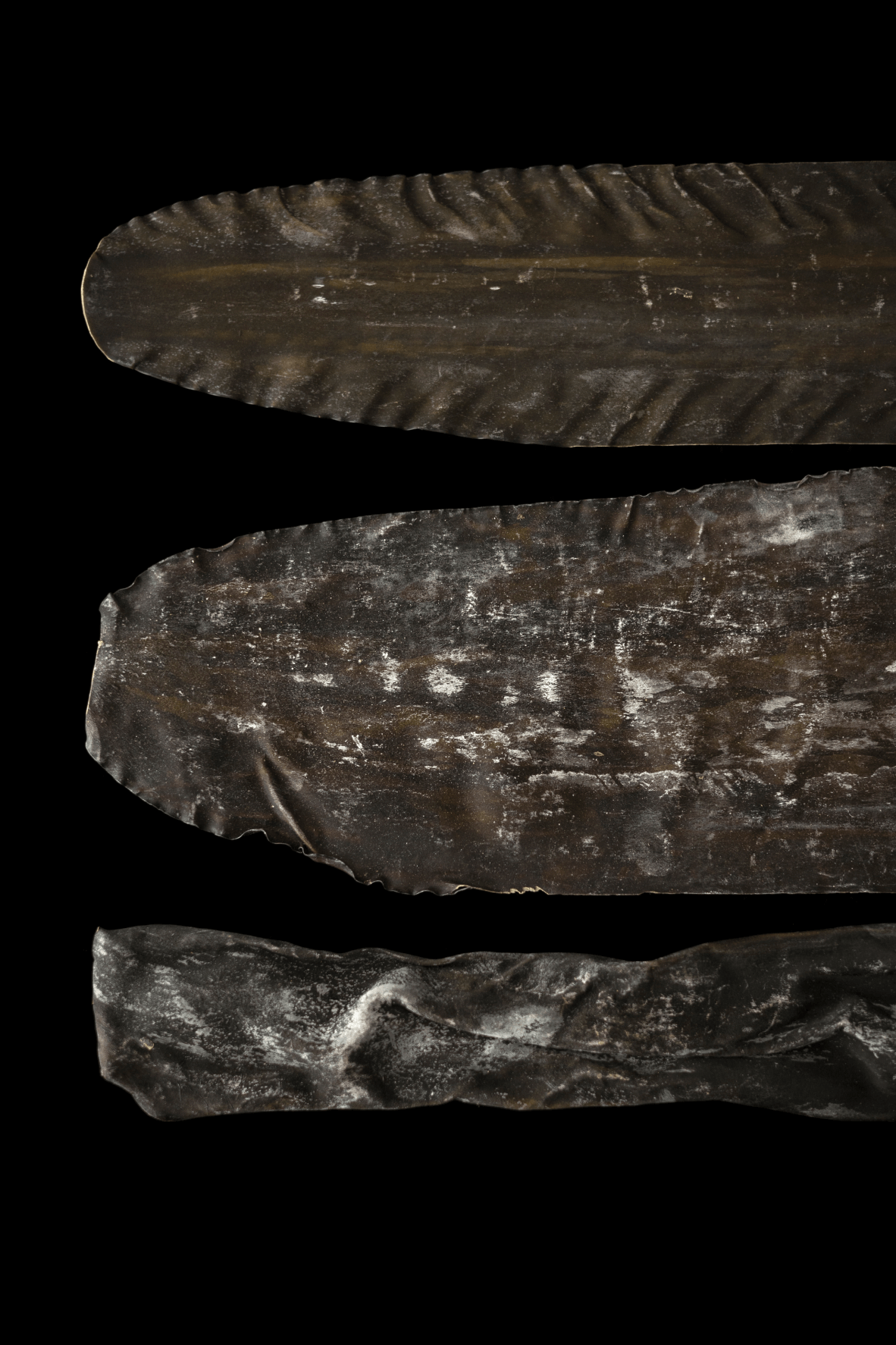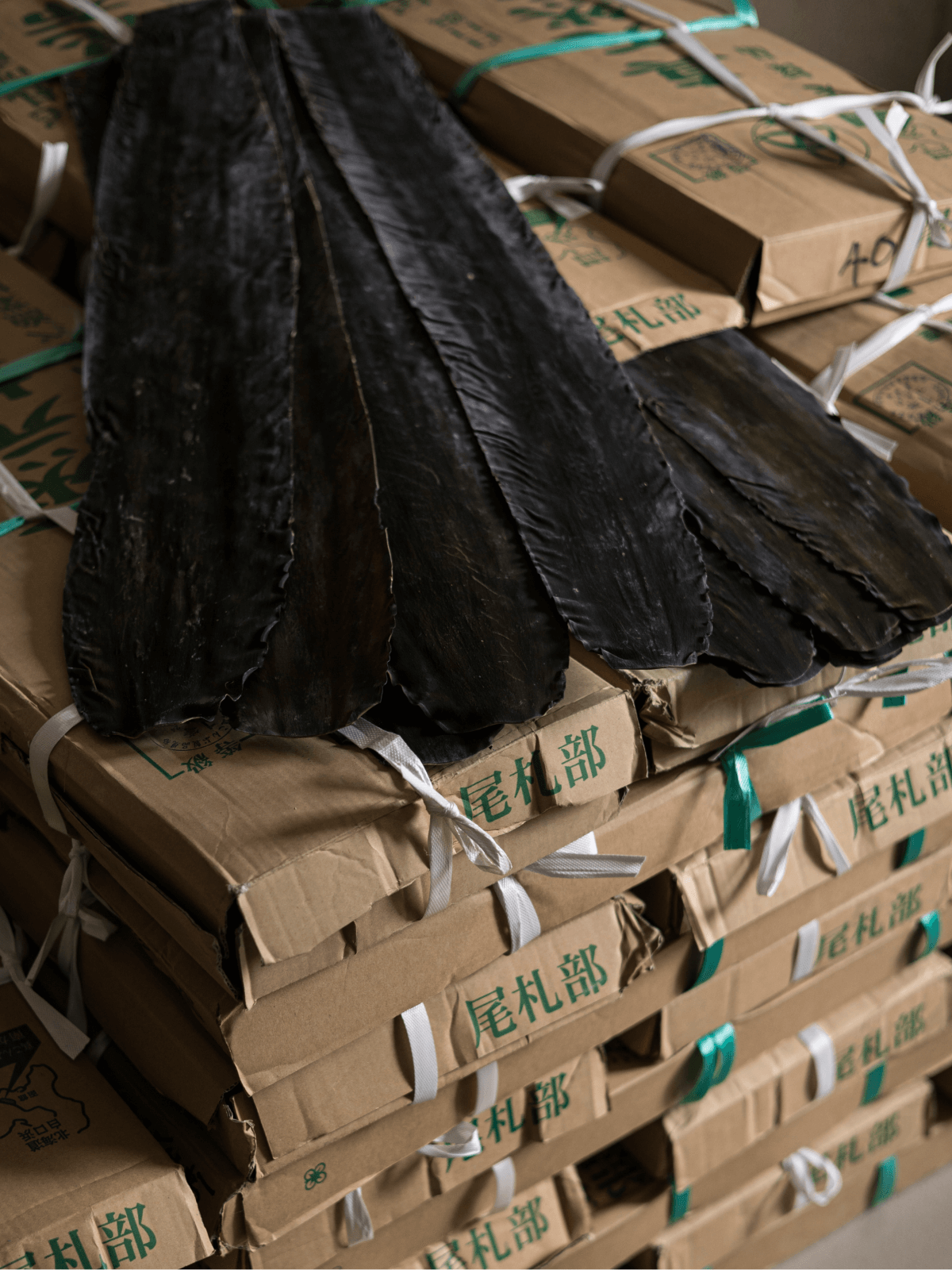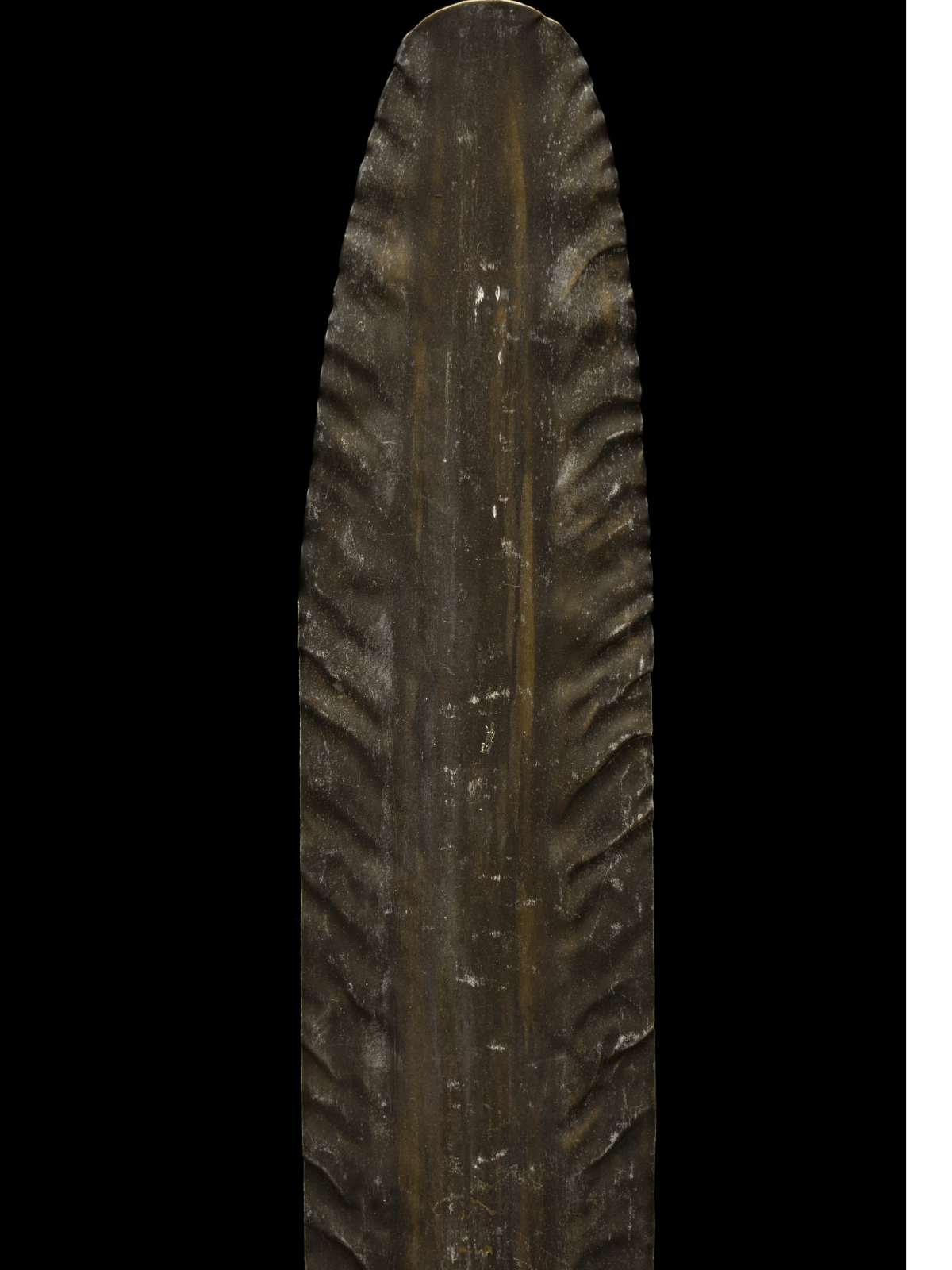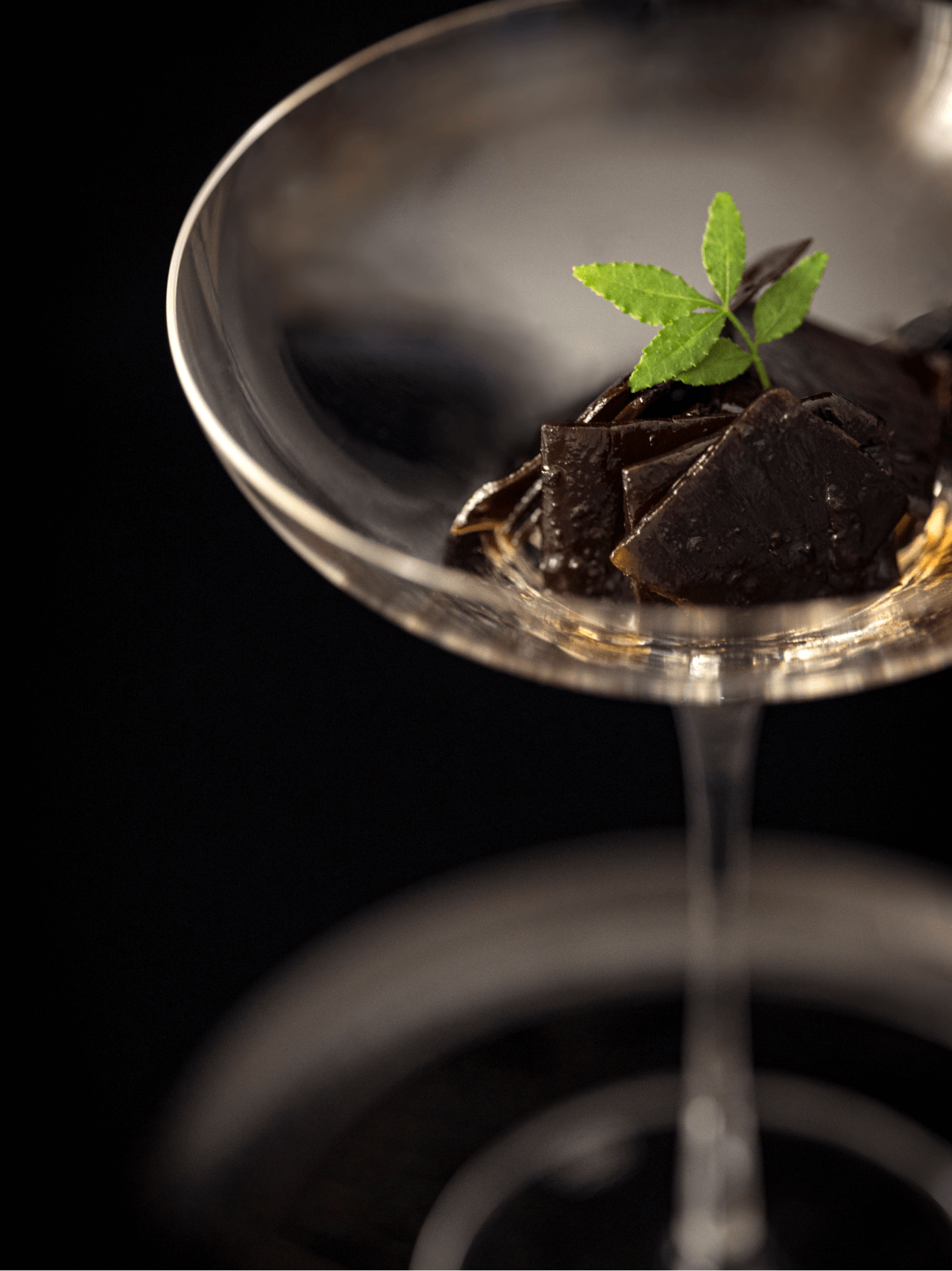The “King of Kombu”
Renowned as the pinnacle of kombu, Ma Kombu is often celebrated as the "King of Kombu" for its superior quality and deep connection to Japanese culinary traditions. Harvested from the nutrient-rich, cold waters of the Oyashio Current, Ma Kombu thrives in the unique marine environment off the coast of Hokkaido, particularly around the southern region near Hakodate. This area is shaped by a rare combination of geographic and oceanographic factors, making it one of the most exceptional environments for kombu cultivation in the world.
The Oyashio Current, originating in the Arctic, flows southward along the eastern side of Hokkaido, bringing cold, oxygen-rich waters filled with nutrients carried from the great rivers of the Eurasian continent. These nutrient-laden waters converge with the distinctive coastal topography around Hakodate, where rocky reefs and sheltered bays provide an ideal habitat for kombu to anchor and grow. This interplay of cold currents, nutrient-rich waters, and the rugged coastline creates a marine ecosystem that is globally unparalleled, fostering the growth of Ma Kombu with its exceptional thickness, flavour, and mineral content.
What sets Makombu apart is its thick, broad leaves, which are ideal for extracting robust yet refined flavours. When used in dashi stock, Ma Kombu produces a broth with a rich sweetness and remarkably elegant umami that enhances the natural flavours of other ingredients without overpowering them.
Ma Kombu is a powerhouse of essential minerals, including calcium, potassium, magnesium, and iron, making it a nutritious addition to any dish. It is also rich in glutamic acid, a key component of umami, the fifth taste. This natural umami enhancer plays a crucial role in elevating flavours, making Ma Kombu indispensable for chefs who seek depth and refinement in their creations.
The science behind kombu’s umami has been extensively studied and is now recognised as a cornerstone of Japanese culinary techniques. One of the most notable findings is the synergy between kombu’s glutamic acid and inosinate, an umami compound found in katsuobushi (dried bonito flakes). This synergy can amplify the perception of umami by up to 7–8 times, creating a flavour profile that is both complex and harmonious. This discovery not only highlights the sophistication of traditional Japanese cuisine but also underscores the scientific foundation of its flavour principles.
Each harvest of Makombu is meticulously selected to ensure consistent quality, meeting the exacting standards of top chefs who demand nothing but the best for their culinary creations. Ma Kombu continues to inspire both traditional and modern chefs worldwide, standing as a testament to the richness of Japan’s culinary heritage and the science of umami.
The Oyashio Current, originating in the Arctic, flows southward along the eastern side of Hokkaido, bringing cold, oxygen-rich waters filled with nutrients carried from the great rivers of the Eurasian continent. These nutrient-laden waters converge with the distinctive coastal topography around Hakodate, where rocky reefs and sheltered bays provide an ideal habitat for kombu to anchor and grow. This interplay of cold currents, nutrient-rich waters, and the rugged coastline creates a marine ecosystem that is globally unparalleled, fostering the growth of Ma Kombu with its exceptional thickness, flavour, and mineral content.
What sets Makombu apart is its thick, broad leaves, which are ideal for extracting robust yet refined flavours. When used in dashi stock, Ma Kombu produces a broth with a rich sweetness and remarkably elegant umami that enhances the natural flavours of other ingredients without overpowering them.
Ma Kombu is a powerhouse of essential minerals, including calcium, potassium, magnesium, and iron, making it a nutritious addition to any dish. It is also rich in glutamic acid, a key component of umami, the fifth taste. This natural umami enhancer plays a crucial role in elevating flavours, making Ma Kombu indispensable for chefs who seek depth and refinement in their creations.
The science behind kombu’s umami has been extensively studied and is now recognised as a cornerstone of Japanese culinary techniques. One of the most notable findings is the synergy between kombu’s glutamic acid and inosinate, an umami compound found in katsuobushi (dried bonito flakes). This synergy can amplify the perception of umami by up to 7–8 times, creating a flavour profile that is both complex and harmonious. This discovery not only highlights the sophistication of traditional Japanese cuisine but also underscores the scientific foundation of its flavour principles.
Each harvest of Makombu is meticulously selected to ensure consistent quality, meeting the exacting standards of top chefs who demand nothing but the best for their culinary creations. Ma Kombu continues to inspire both traditional and modern chefs worldwide, standing as a testament to the richness of Japan’s culinary heritage and the science of umami.
READ MORE

Wild, Perfected by Ageing
Wild Makombu is deeply connected to its environment, growing in harmony with the sea. Unlike cultivated kombu, which is harvested after just one year, wild kombu matures over two years on rocky reefs, nourished by the cold, nutrient-rich waters of southern Hokkaido. This extended growth period allows the kombu to develop its characteristic thickness and wide blades, qualities that set natural Ma Kombu apart from other varieties. This is precisely why we remain committed to using only wild kombu.
Once harvested by skilled fishermen using time-honoured methods, the kombu is carefully rinsed and dried in the open air, where it is exposed to natural sunlight and sea breezes. This process enhances its flavour and preserves its nutrients. The dried kombu is then meticulously sorted to remove any imperfections before entering our specialised maturation facility.
Here, it is aged for 3 to 7 years, a process during which the natural minerals and umami compounds in Ma Kombu intensify. Scientific studies have shown that aging kombu enhances its glutamic acid content, the primary component of umami, by up to 30%, resulting in a richer and more balanced flavour. During this period, the kombu undergoes enzymatic reactions that break down complex carbohydrates and proteins into simpler compounds, further amplifying its natural sweetness and depth.
Additionally, the texture of the kombu becomes softer and more pliable over time, making it easier to release its flavours when used in cooking. This gradual process is key to achieving the unparalleled richness, clarity, and complexity of flavour that only aged kombu can provide, distinguishing it as an essential ingredient for creating exceptional dashi and elevating culinary dishes.
Once harvested by skilled fishermen using time-honoured methods, the kombu is carefully rinsed and dried in the open air, where it is exposed to natural sunlight and sea breezes. This process enhances its flavour and preserves its nutrients. The dried kombu is then meticulously sorted to remove any imperfections before entering our specialised maturation facility.
Here, it is aged for 3 to 7 years, a process during which the natural minerals and umami compounds in Ma Kombu intensify. Scientific studies have shown that aging kombu enhances its glutamic acid content, the primary component of umami, by up to 30%, resulting in a richer and more balanced flavour. During this period, the kombu undergoes enzymatic reactions that break down complex carbohydrates and proteins into simpler compounds, further amplifying its natural sweetness and depth.
Additionally, the texture of the kombu becomes softer and more pliable over time, making it easier to release its flavours when used in cooking. This gradual process is key to achieving the unparalleled richness, clarity, and complexity of flavour that only aged kombu can provide, distinguishing it as an essential ingredient for creating exceptional dashi and elevating culinary dishes.
READ MORE

Imperial Tribute
“Kenjo” Kombu 献上昆布
and Shirokuchi hama, Osatsube, First Grade
白口浜天然真昆布尾札部産一等検
Kenjo kombu, designated as“Imperial Tribute Kombu”refers to a highly prized variety historically presented to both the Japanese Imperial Court and the Shogunate. This tradition began during the Edo period when only the finest kombu—meticulously harvested and prepared—was selected for these prestigious offerings.
The term signifies the pinnacle of quality, cultural prestige, and historical significance.
Among these, the most exceptional kombu is the first-grade variety harvested from the natural Shirokuchi-hama coast in Osatsube, celebrated as one of the finest of all time. However, due to environmental changes in recent years, natural harvesting in this region has ceased. The kombu we offer comes from the final harvest, which is still being carefully matured to further enhance its depth of flavour.
This is an extraordinarily rare and exclusive Ma Kombu, available in extremely limited quantities.
If you are interested in any rare Makombu, please feel free to reach out to us for consultation. It would be our pleasure to assist you in exploring its potential for your culinary creations.
The term signifies the pinnacle of quality, cultural prestige, and historical significance.
Among these, the most exceptional kombu is the first-grade variety harvested from the natural Shirokuchi-hama coast in Osatsube, celebrated as one of the finest of all time. However, due to environmental changes in recent years, natural harvesting in this region has ceased. The kombu we offer comes from the final harvest, which is still being carefully matured to further enhance its depth of flavour.
This is an extraordinarily rare and exclusive Ma Kombu, available in extremely limited quantities.
If you are interested in any rare Makombu, please feel free to reach out to us for consultation. It would be our pleasure to assist you in exploring its potential for your culinary creations.
READ MORE


Kombu,
The Ocean’s Gift to Cuisine
Kombu, a type of edible kelp belonging to the Laminariaceae family, thrives in nutrient-rich, cold-water environments. Scientifically recognised for its high iodine, calcium, and mineral content, kombu is not only a valuable food source but also plays a vital role in marine ecosystems. This seaweed has been a cornerstone of Japanese cuisine for centuries, celebrated for its ability to enhance flavours with its natural umami.
Best known as the base ingredient in dashi—a fundamental broth that forms the backbone of many Japanese dishes—kombu is prized for its unique flavour-enhancing properties. It not only enriches traditional Japanese meals but has also become a sought-after ingredient in modern international cuisine.
Kombu grows predominantly in the cold waters around Japan, although various types of kombu are found in oceans worldwide. However, kombu capable of producing the rich umami required for high-quality dashi is said to grow only in the uniquely intertwined marine and geological conditions around Hokkaido, Japan’s northern island, and certain parts of Russia. The most prized varieties are harvested from Hokkaido, renowned for their exceptional taste and quality.
Kombu’s versatility makes it indispensable in cooking—it can be used to prepare broths, as a wrap for curing fish (kobujime), or as tsukudani, a soy-braised condiment.
In addition to its culinary value, kombu is a sustainable food with zero waste, as the entire plant is edible and can be dried for long-term storage. Since it grows in seawater, its cultivation requires no freshwater resources. Unused kombu is repurposed in agriculture, serving as livestock feed or natural compost to enrich the soil with minerals. Research has also shown that feeding cattle with kombu can significantly reduce methane emissions. Being plant-based, kombu is an environmentally friendly choice that appeals to vegans and vegetarians alike.
Best known as the base ingredient in dashi—a fundamental broth that forms the backbone of many Japanese dishes—kombu is prized for its unique flavour-enhancing properties. It not only enriches traditional Japanese meals but has also become a sought-after ingredient in modern international cuisine.
Kombu grows predominantly in the cold waters around Japan, although various types of kombu are found in oceans worldwide. However, kombu capable of producing the rich umami required for high-quality dashi is said to grow only in the uniquely intertwined marine and geological conditions around Hokkaido, Japan’s northern island, and certain parts of Russia. The most prized varieties are harvested from Hokkaido, renowned for their exceptional taste and quality.
Kombu’s versatility makes it indispensable in cooking—it can be used to prepare broths, as a wrap for curing fish (kobujime), or as tsukudani, a soy-braised condiment.
In addition to its culinary value, kombu is a sustainable food with zero waste, as the entire plant is edible and can be dried for long-term storage. Since it grows in seawater, its cultivation requires no freshwater resources. Unused kombu is repurposed in agriculture, serving as livestock feed or natural compost to enrich the soil with minerals. Research has also shown that feeding cattle with kombu can significantly reduce methane emissions. Being plant-based, kombu is an environmentally friendly choice that appeals to vegans and vegetarians alike.
READ MORE

